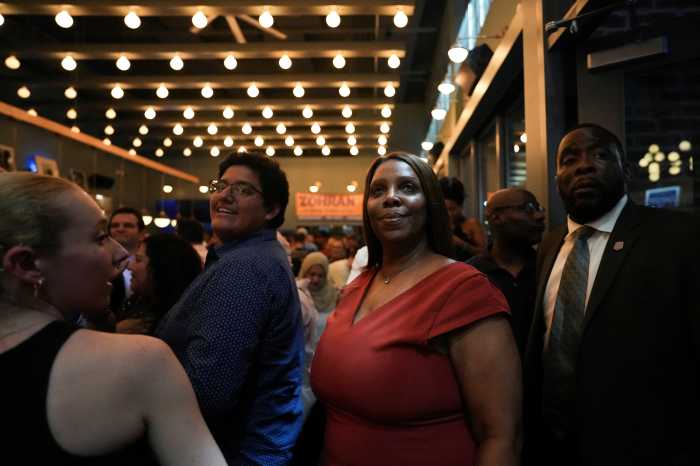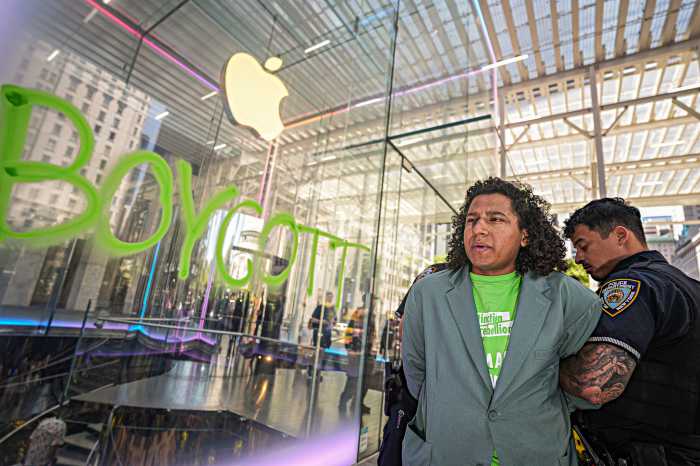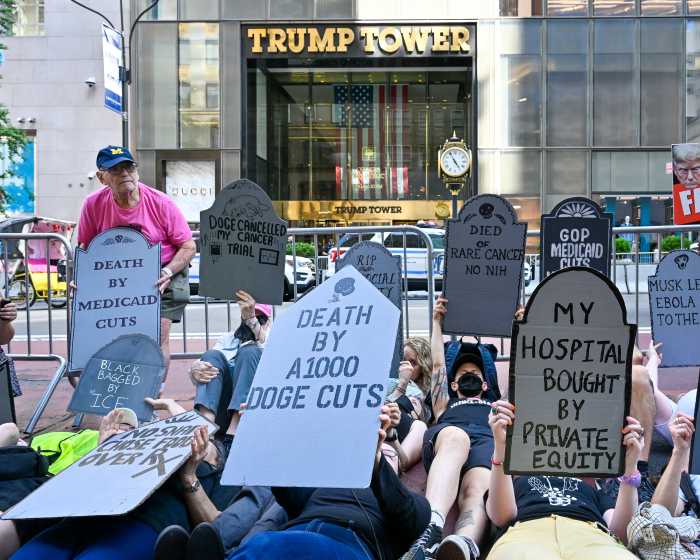BY TERESE LOEB KREUZER with JOSH ROGERS | A New York City hurricane evacuation map released in June 2013 put all of Community Board 1 and much of other parts of Lower Manhattan in an evacuation zone. Neither mayoral Democratic candidate Bill de Blasio nor Republican candidate, Joseph Lhota, have been specific about how they would handle the evacuation of hundreds of thousands of people, or about what they would do, in general to mitigate disastrous storm surges and flooding in lower Manhattan.
At their most recent televised debate on Oct. 22 both said they would build on Mayor Michael Bloomberg’s proposals for flood mitigation, put forward in a book called “PlaNYC: A Stronger, More Resilient New York,” published in June 2013.
Debate moderator Maurice DuBois of CBS 2, asked them specifically about what they thought of Bloomberg’s “Seaport City” proposal for the East Side of Lower Manhattan.
“Mr. Lhota,” you say you want to build a new version of Battery Park City on Manhattan’s East Side,” said DuBois. “Wouldn’t that mean extending landfill out into the East River, and given how Sandy flood waters overwhelmed our shoreline — most notably places like N.YU. and Bellevue Hospitals — how is building on the shore feasible, much less a good idea?”
Lhota said it was “a very good idea” because it would use dirt and rocks excavated from such construction projects as the Second Avenue subway to build out the island and protect the shoreline.
At the candidates’ first debate last week, Lhota said he wanted to see office buildings, affordable and market rate housing built on the levees. In PlanNYC, Bloomberg said that levees from the Battery Maritime Building to Pier 35 would provide “new land on which commercial and residential buildings could be constructed, both to accommodate the City’s growth and to help finance the construction of the multipurpose levee.”
Bill de Blasio said that he generally agreed with Lhota about this proposal. “It’s not a bad idea,” he said. “I think it’s an ambitious idea. It’s not what I would say is the first, most important thing to do in terms of resiliency.”
He called Mayor Bloomberg’s resiliency plan “a great blueprint for the future of this city.” He liked the proposals to restore wetlands and dunes and to install portable barriers. He referenced expected federal aid that would pay for much of this and added, “I think Seaport City could be part of the solution.”
Lhota remarked that it was “the only thing that Bloomberg put forward in that report that will pay for itself with property taxes on the mixed-use residential housing and the commercial buildings that would be put there.”
In a telephone “Town Hall” call-in session on Oct. 18, Lhota responded to a question from this reporter about his thoughts on post-Sandy protection for Lower Manhattan.
“We’ve just wasted a whole year and that bothers me more than anything else,” he said.
He noted that he had been head of the Metropolitan Transportation Authority (M.T.A.) when Sandy hit. The M.T.A. had the gargantuan task of getting the flooded subways to run again.
“If you live near South Street Seaport, it’s not back to normal down there,” Lhota said. “And we need to do something. The mayor and the mayor’s people started talking about putting in temporary barriers that would go up if we expect a storm surge. It’s one thing to talk about it and do nice pictures about it. We’ve got to start it. … We need to start protecting our lives and our assets so that we’re not at the beck and call of Mother Nature. … We’ve gone a whole year without having another storm but it can easily happen again and again. We’ve got to start building all of these barriers.”
He said he didn’t know why they had not yet been built. “I keep asking the same question and I’m not getting any answer,” he said. “We know it’s a problem.”
In an interview this past May in the offices of Downtown Express, de Blasio also lauded temporary flood barriers for Lower Manhattan.
“It strikes me on a common sense level as a more believable short-term solution, perhaps, than the sea barriers,” he said during the hour-long interview on a wide range of issues.
De Blasio, who spoke before the mayor released his recommendations, also said he would have more to say in the coming months about storm protection, and that he had not reached a final decision on sea barriers or temporary structures.
“I feel more sureness on [changing] building codes, on incentives to get folks out of the areas below sea level, and on wetlands restoration or creation,” he said.





































